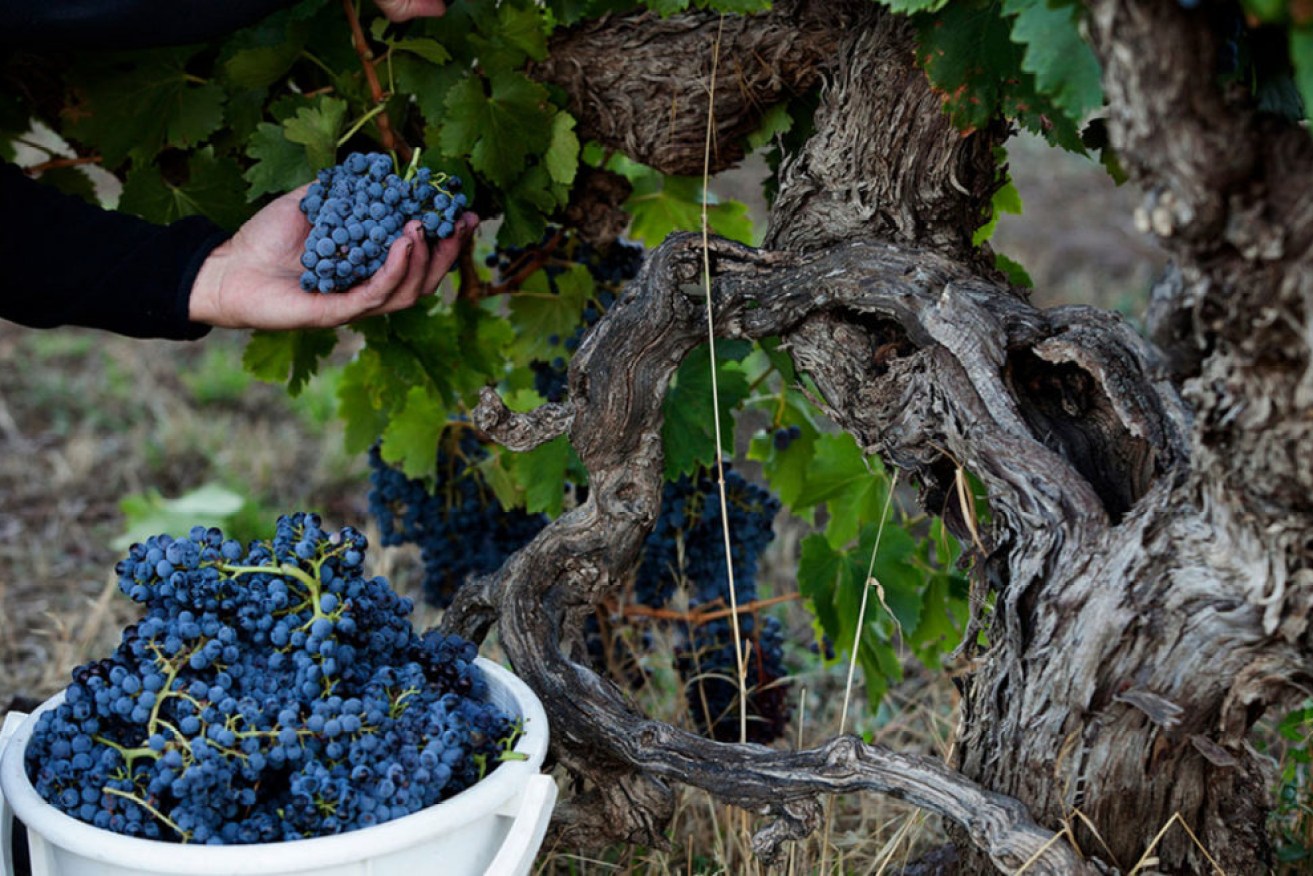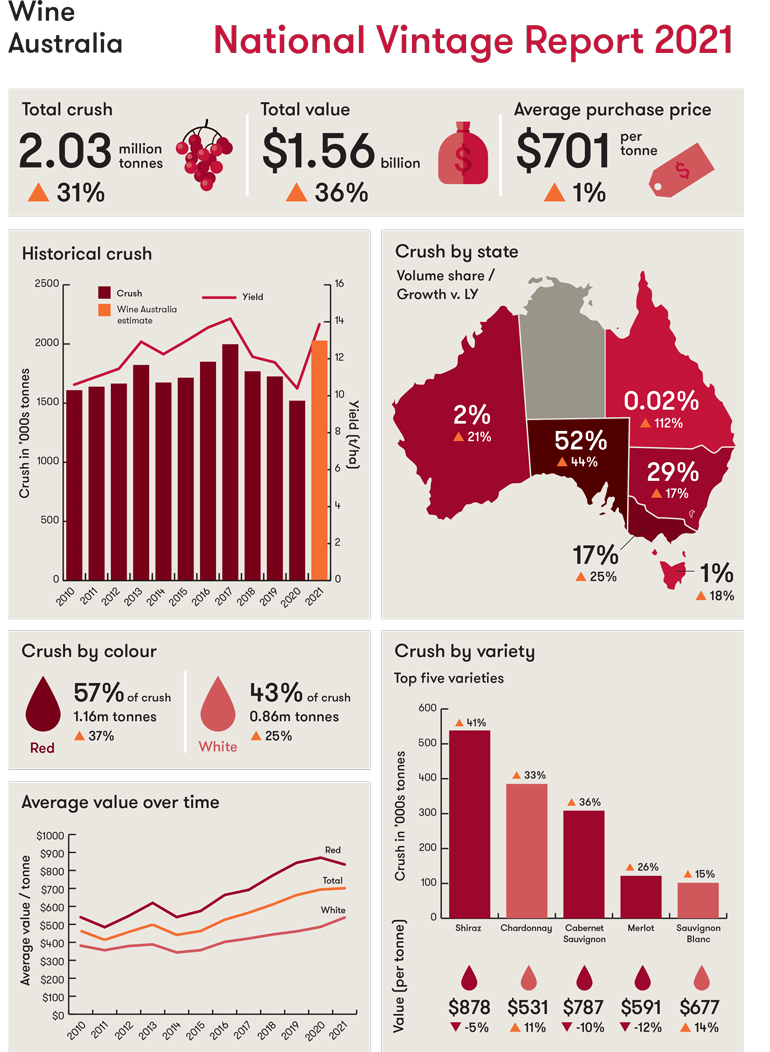‘Unicorn vintage’ results in record grape harvest
A bumper vintage across South Australia’s major grape growing regions has helped the Australian wine sector produce a record crop of 2.03 million tonnes in 2021.


Photo: Barossa Grape & Wine Association.
Wine Australia today released the National Vintage Report 2021, an overview of the season characterised by near-perfect growing and ripening conditions across most states and regions.
The 2021 crush was 31 per cent higher than the 2020 vintage and 19 per cent above the 2019 vintage and is the first time national production has exceeded two million tonnes.
South Australia was the largest contributor of the states, with an estimated harvest of 1.06 million tonnes representing 52 per cent of the national total. The SA crush was up significantly on 2020 when bushfires and poor growing conditions limited the harvest to just 651,000 tonnes.
The total 2021 crush in the Riverland was up 21 per cent to 558,252 tonnes, representing 31 per cent of Australia’s grape production.
The Barossa Valley’s crush was up 112 per cent after a small 2020 vintage to 60,018 tonnes to be the state’s second-largest, followed by similarly improved harvests in Langhorne Creek, Coonawarra, Padthaway, McLaren Vale, Wrattonbully and Adelaide Hills.
Wine Australia General Manager, Corporate Affairs and Regulation Rachel Triggs said 2021 was being described as a ‘unicorn’ vintage because of the rare combination of events leading to both exceptional quality and a good crop size.
“Good fruit set, plenty of water at the right time, lack of heatwaves, low disease pressure, and favourable harvest conditions have resulted in a high-yielding, high-quality vintage,” she said.
Red grapes made up 57 per cent of the crush comprising 1.16 million tonnes, an increase of 37 per cent over the previous year. The white varieties comprised 864,946 tonnes, an increase of 25 per cent. Overall, white variety’s share of the crush reduced to 43 per cent, the lowest since 2004.
The main contributor to the increase in red crush was Shiraz, up by 41 per cent to a record 538,402 tonnes. This saw its share increase by one percentage point to 46 per cent of all red varieties and 27 per cent of the total crush.
The total value of the crush at the weighbridge increased by more than $400 million (36 per cent) to $1.56 billion, with the increased crop size amplified by a small increase in overall average value, up by 1 per cent to $701 per tonne. This was the highest since 2008.

The overall increase was made up of a 4 per cent decrease in the average value of reds to $833 per tonne, offset by an 11 per cent increase in the average value of whites to $538 per tonne.
The bumper crop comes at a time of uncertainty for the Australian wine industry after China’s Ministry of Commerce announced anti-dumping and countervailing investigations in August. It then imposed interim countervailing duties of 6.3–6.4 per cent and anti-dumping tariffs of between 116.2 per cent and 218.4 per cent on bottled wine on November 28 and extended them for a further five years on March 28.
Wine exports to China for the December 2020 to March 2021 period were just $12 million compared to $325 million in the comparable period a year ago.
Triggs said concerns prior to vintage about the effect on grape prices of the Chinese tariffs imposed by Australia’s former biggest export market had not been realised in 2021.
However, she said that the overall increase partly reflected growth in the contribution of higher-priced fruit to the average.
“That’s not to say that some producers aren’t doing it tough,” Triggs said.
“Exposure to China is very variable from one producer to another depending on their ability to diversify, cash flow and the ability to physically hold stock and it will take some producers time to bounce back, which could also have flow-on effects for growers.”
The average value for red varieties, preferred by Chinese drinkers, declined in 2021 for the first time since 2014 while whites continued to increase in value.
“To make the most of our opportunities in markets such as the United States and the United Kingdom, the balance in supply between red and white winegrapes may need to change,” Triggs said
“We are working closely with Austrade to grow our exports in emerging Asian wine markets such as South Korea, Taiwan and Thailand, where there has been strong growth in recent times and where consumers strongly favour red wine.”




